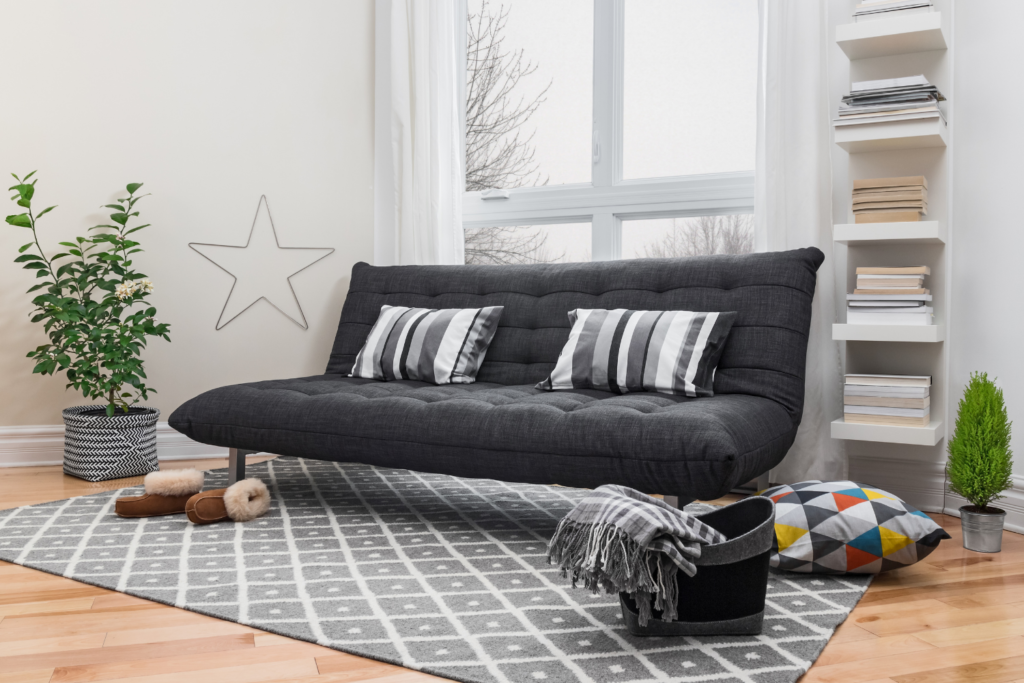Futons have long been a favorite piece of furniture for young college students as they move into their first dorm room or college apartments. These versatile and inexpensive items double as a comfortable bed and a functional chair or couch, and they’re much easier to move around than a bed.
So what should college students look for when purchasing a futon? The first consideration, of course, is often price. Futons can range in price from next to nothing for a used one, to hundreds or even sometimes a thousand dollars at trendy furniture stores that cater to hip urban apartment dwellers.
While there’s no reason to pay top dollar for a futon, college students may want to consider investing a few hundred dollars in this purchase. After all, a well-made futon can be used for years in various apartments as beds, and then later in a spare bedroom or as a couch in a basement or den.
Here’s a buying guide to help college students look for the right futon.
In this post:
Futon Mattress Buying Guide
Futon mattresses come in the same sizes as regular beds: twin, full, queen, and (less often) king. Of course, smaller futon mattresses cost less, and they also may be more practical for small spaces and for moving. However, a larger futon mattress may be more practical in the long run, as a full or queen-sized futon can be used as a couch or guest bed.
Traditional futon mattresses are made out of cotton. 100% cotton futon mattresses are easy to fold and flexible. They may feel too soft to sleep on at first, but they become firmer after being slept on for a few months. Other futon mattresses are made out of a combination of cotton and either foam or polyester. These tend to hold their shape better, which helps the longevity of a futon that might be used in the future as a couch. More expensive futon mattresses include cotton-wool blend and inner-spring futon mattresses. These tend to be the most comfortable and durable, but also the most expensive.
When purchasing a futon mattress, some students also purchase a futon cover, which is a fabric cover that zips around the mattress. This is a useful item to have if the futon is going to use as a couch, but isn’t really necessary if its main function is a bed. Futon covers come in all colors and fabrics and are a great way to instantly decorate a space. They’re also easier to clean than the futon mattress itself.
Futon Frame Buying Guide
Futon frames are made of either metal or wood. Metal frames usually are quite a bit cheaper. Some of these are well constructed, but it’s important to look at their construction carefully because some of them are shoddy. Wood futon frames usually are more expensive, and look more like “real” furniture, especially if they are finished. They do tend to be more durable, so it may be worth the extra money for wood.
Types of Futon Frames
Futon frames generally fit into three types: trifold futon frames, bi-fold futon frames, and wall-hugger futon frames. Let’s take a look at each type more closely.
Trifold futon frames
Trifold futon frames fold three times and sit either directly on or close to the floor. These generally are cheaper and can be easier to move, but aren’t all that practical for doubling as a sofa.
Bi-fold futon frames
Bi-fold futon frames fold in the middle and often look more like a sofa bed. These are more expensive but make for better sofas, especially if there built-in arms.
Wall-hugger futon frames
Wall-hugger futon frames are a type of bi-fold that can be converted from sofa to bed without moving the whole thing away from the wall.
Take the time to shop for futons that are comfortable and sturdy, and if possible, spend the money on a futon that will be around for years to come. Futons are one of the most versatile types of furniture on the market, and a trusty college futon is a great investment.






